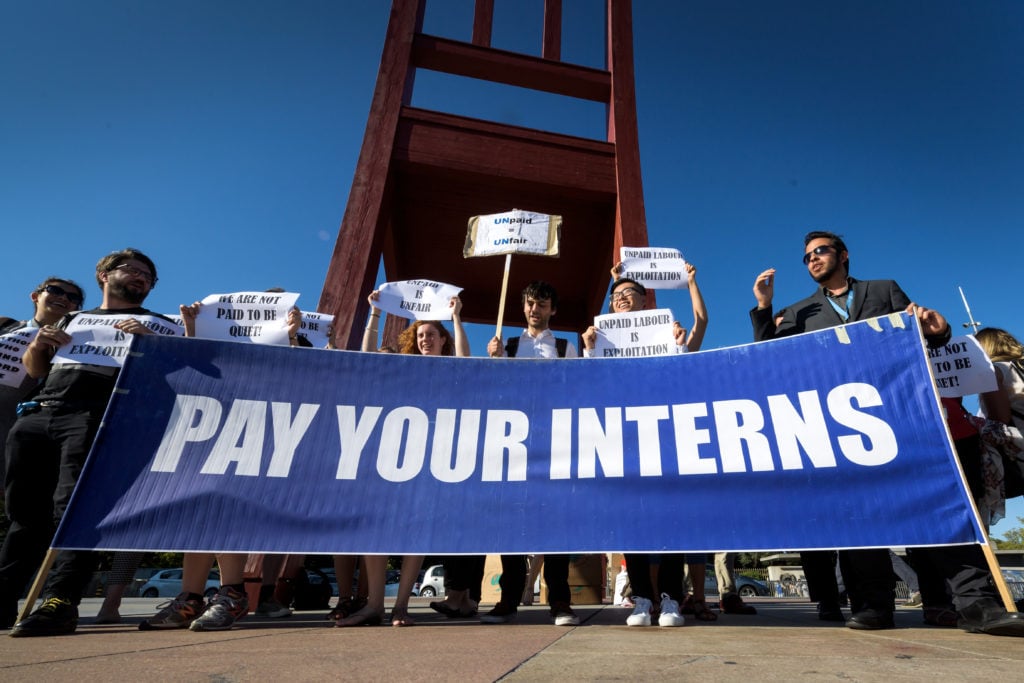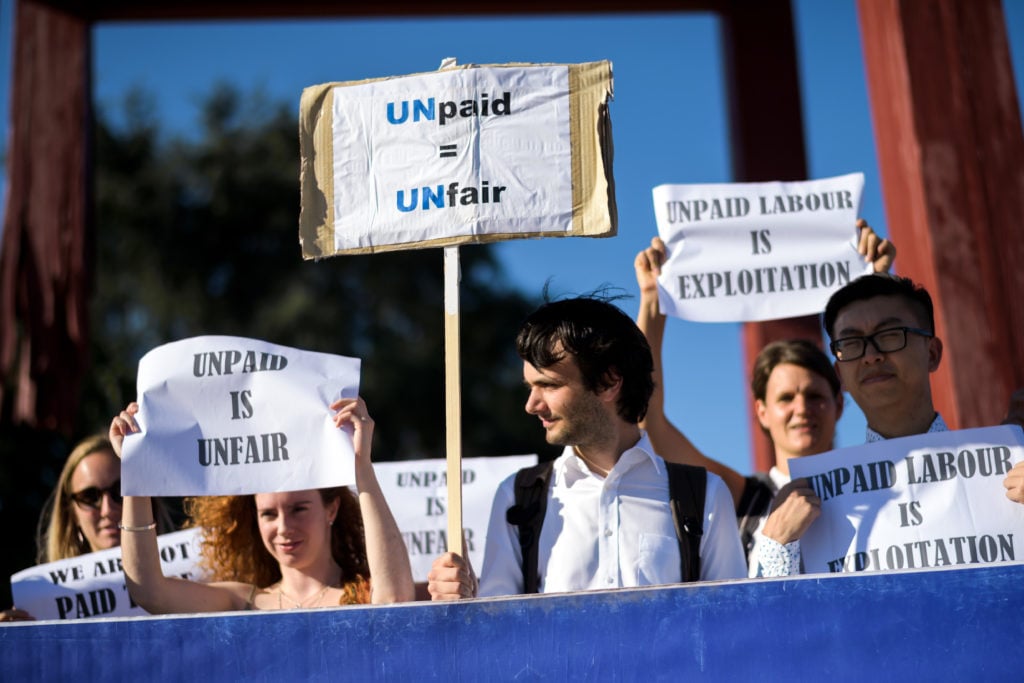Art World
A New Campaign to End Unpaid Internships in the Art World Exposes a Problematic Reliance on Free Labor
Art + Museum Transparency has launched another Google spreadsheet, this one for art world interns.

Art + Museum Transparency has launched another Google spreadsheet, this one for art world interns.

Sarah Cascone

For many college students, summer means an internship, a chance to gain real world experience in their chosen field that will help them get a leg up as they leave school and begin their careers. But there’s a new call for the cultural sector to put an end to unpaid internships that exploit free labor.
Anyone who has worked as an internship at a museum or arts organization in the last three years is being called to respond to a new, anonymous survey, sharing their compensation, duties, and feedback about their experience in a public spreadsheet.
The effort to collect this data is the brainchild of the group Art + Museum Transparency, founded by Michelle Millar Fisher, the new curator of contemporary decorative arts at the Museum of Fine Arts Boston. Earlier this year, the group started the “Art/Museum Salary Transparency 2019” spreadsheet inviting museum workers to anonymously share their salaries.
To date, the spreadsheet has almost 3,000 entries, covering a large range of salary levels. “Among all of the information pouring from our arts and museum colleagues near and far, by far the most heartbreaking numbers to see were the zeros recorded by unpaid interns around the world,” Art + Museum Transparency told artnet News in an email. “When we talked about our goals moving forward, we all agreed that addressing unpaid internships is a natural and urgent next step.”

Unpaid interns protesting at the United Nations in Geneva. Photo by Fabrice Coffrini/AFP/Getty Images.
“When base salaries start at nothing, it has a distinct trickle-up effect on the rest of the field, lowering wages and depressing expectations around compensation as a whole,” explained the group, whose members prefer to remain anonymous, with Fisher as its public face. “Many of us were unpaid interns at one point or another, and we know their tolls personally. The debts accrued and savings delayed affect one’s entire career.”
Art + Museum Transparency’s call to action (articulated earlier this week in an op-ed in ARTnews) comes on the heels of a resolution from the Association of Art Museum Directors in June, which urges its members to create “diverse, equitable, accessible, and inclusive” paid opportunities for entry-level applicants, insisting that “paid internships are essential to increasing access and equity for the museum profession.”
The AAMD has already been instrumental in the push to phase out unpaid internships, launching a paid internship pilot program with 10 participating museums in 2018. The program is designed to benefit applicants from disadvantaged backgrounds, who are often unable to afford to work for free, unlike their more affluent peers.
“Unpaid and underpaid internships limit the pool of emerging professionals to a privileged few and inhibit inclusivity and diversity in arts and museum spaces,” added Art + Museum Transparency.
So we understand *why* museums thought unpaid training was a good idea. We don’t think those who manage these programs are bad actors. But the evidence is clear and @MellonFdn @FordFoundation @MuseumDirectors agree, unpaid internships have failed.
We must turn the page. 3/3
— Art + Museum Transparency (@AMTransparency) July 18, 2019
But while unpaid internships may be on the decline—especially after Condé Nast’s $5.8 million 2014 settlement in a class-action lawsuit brought by thousands of unpaid former interns—the art world, with its preponderance of nonprofits, seems slower to adapt than other industries.
“Because [the unpaid internship] has been the status quo for so long, organizations are reluctant to spend the time and resources to reevaluate internships from the ground up,” explained Art + Museum Transparency. Based on responses to the spreadsheet, which ask participants to commit to not engaging unpaid labor, “even those who are experiencing [unpaid internships] right now find it hard to say they won’t support them in the future in some cases.”
The new spreadsheet, which includes data from the last three years, reveals that many prestigious institutions—the Museum of Fine Arts Boston, the Los Angeles County Museum of Art, the Brooklyn Museum, New York’s Metropolitan Museum of Art, and the National Portrait Gallery in Washington, DC, to name a few—pay their interns nothing. Some interns, in fact, have to pay thousands of dollars for the experience, in order to receive college credit from their universities.
“We’re saddened but not really surprised,” said Art + Museum Transparency. “As with the salary transparency spreadsheet, much of the data contributed confirmed our long-standing suspicions about the pervasiveness of depressed wages in the field.”